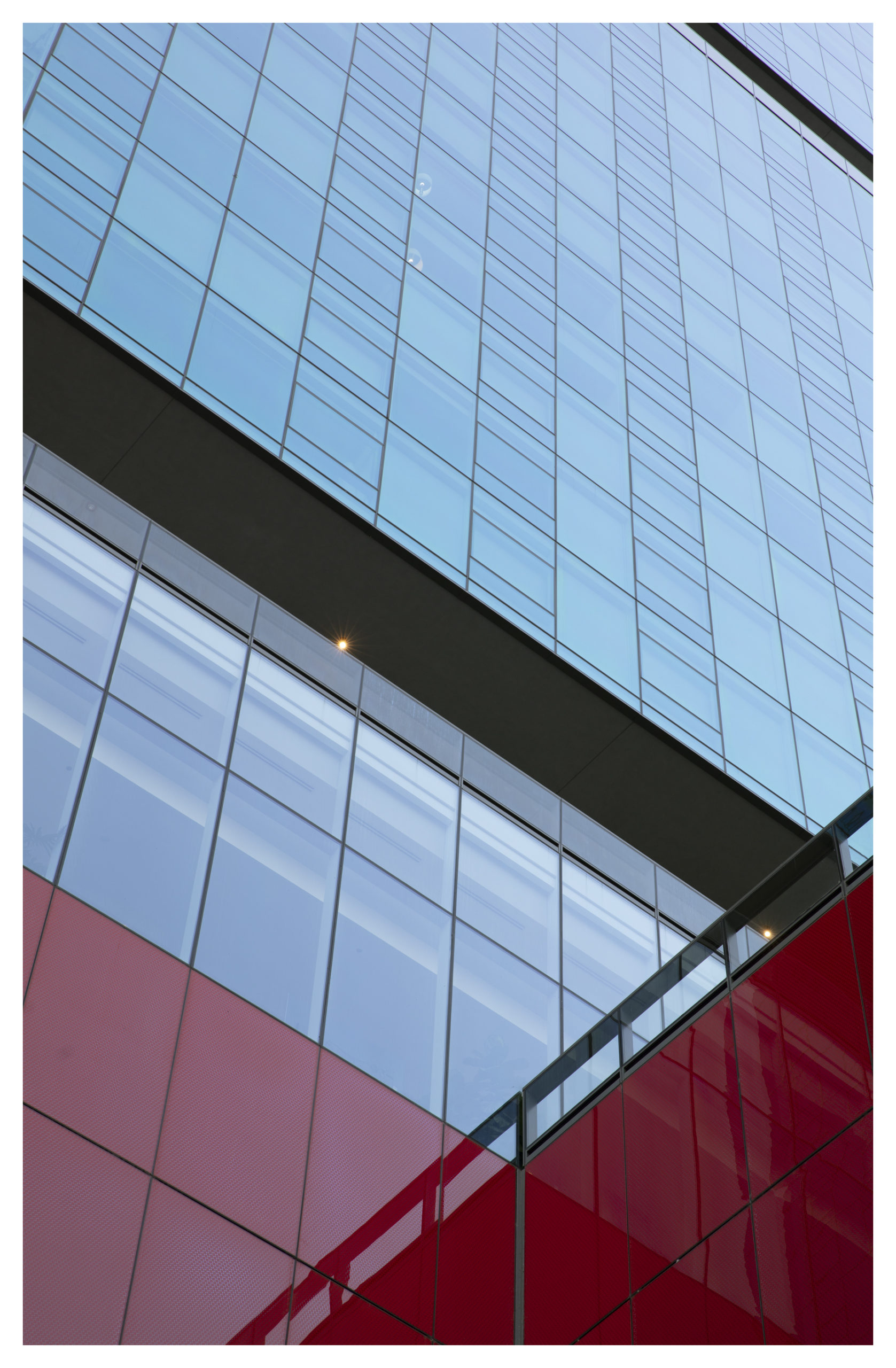As a design-driven real estate development firm, our Modernist roots shine in each one of our projects. A staple of classic Modernist design, we often employ glass curtain walls to create stunningly transparent and sleek exteriors. In respect to the tradition and technique, we’re diving deep into the history of the curtain wall and its impact on our structures today.

The Curtain Wall Defined
A curtain wall is a nonstructural exterior component of a building, at first serving the mere purpose of keeping weather out and occupants in. Being nonstructural, curtain walls are often made of lightweight materials such as glass, metal panels or thin stone. Glass curtain walls have the added benefit of introducing deeply penetrating natural light into a building, and can offer broad, sweeping views, creating seamless cohesion between the built environment and its natural surroundings.
Because curtain walls are nonstructural components, load-bearing responsibilities fall on the shoulders of strong metal frames. The invention of the curtain wall was in fact made possible by the growth of the iron and steel industry, when these strong metal materials were made more readily available and affordable to the mass market in the late 18th century.
The first Modernist building, The Crystal Palace, was built during this time. Shortly after The Crystal Palace, Modernist master Ludwig Mies van der Rohe pioneered the contemporary steel-and-glass aesthetic that defined an era and way of designing, coining the name for the style: “skin-and-bones architecture.” Today, designing minimalistic, functional building frames in steel and glass, and employing curtain walls to do so, continues to be a signature mark of Modernist structures.

Adding Beauty and Sustainability
As a building material, glass has evolved considerably over the years. Our capability to utilize glass in curtain wall systems connects indoors and outdoors, and promises a beautiful environment, with an abundance of natural sunlight and impressive views. Outside of aesthetic, glass curtain walls also serve the functionality of increased performance in temperature moderation, moisture protection and improved acoustics.
In our own projects, we utilize Low-E UV protected laminated glass with a heat reflective coating, which contributes to a regulated indoor environment, particularly in the harsh Arizona climate, and provides added sustainability, decreasing energy need for additional heating and cooling control.
As we continue to explore the integration of the built and the natural environment, we appreciate the curtain wall for its transparency and sustainability, and the wonder that it adds to exceptional Modernist design.

